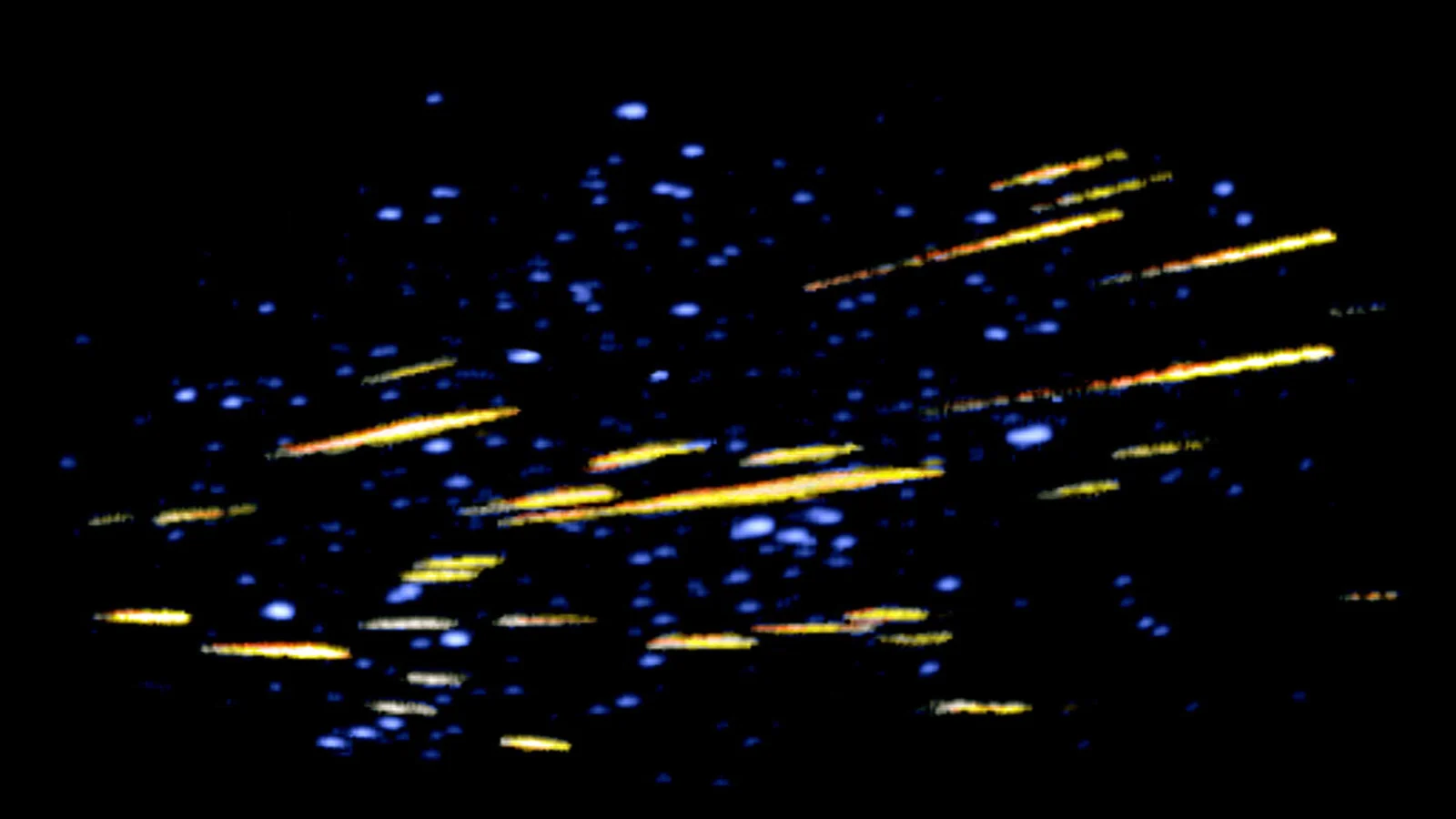
Alpha Monocerotids outburst may produce a meteor storm
A normally quiet meteor shower may burst to life as a brief meteor storm Thursday night
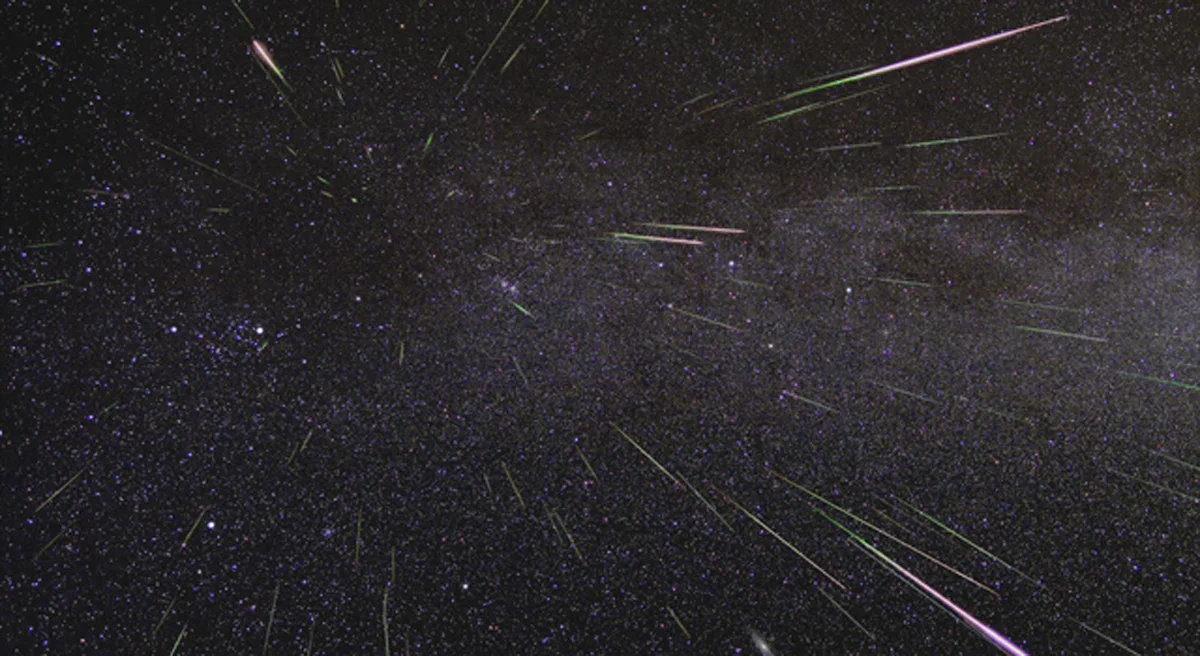
On the night of Thursday, November 21, a meteor shower that you probably haven't heard of, which originates from a comet noone has apparently seen before, is predicted to put on a brief but spectacular show.
Normally, the peak of the alpha Monocerotid meteor shower produces one or two meteors per hour. That's quiet enough that this annual meteor shower doesn't receive much attention from the stargazing community.
This year, however, it's possible we may be treated to an unforgetable show that we won't want to miss!
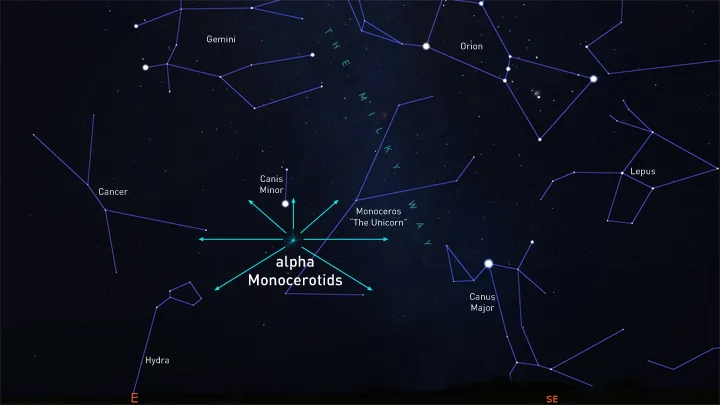
The position of the alpha Monocerotids radiant at 11:40 p.m., as viewed from the Eastern time zone. Credti: Stellarium/Scott Sutherland
According to meteor scientists Peter Jenniskens and Esko Lyytinen, on the night of November 21, for between 15 to 40 minutes, centred around 11:50 p.m. EST, Earth is expected to pass through a narrow, dense cluster of meteoroids.
From around 11:30 p.m. EST to 12:10 a.m. EST, the one or two meteors per hour we normally see from this meteor shower could suddenly bloom into an outburst which would produce the equivalent of at least 400 meteors per hour!
Where we would normally just see one meteor for that entire period, instead we could see around 7 meteors every minute.
As Lyytinen wrote on the Meteor News site, however, there is the possibilty that this event could produce the equivalent of up to 1,000 meteors per hour! That's around 16-17 meteors per minute!
UNCOOPERATIVE WEATHER
Unfortunately, the weather across Canada Thursday night is not favourable to see this meteor storm.
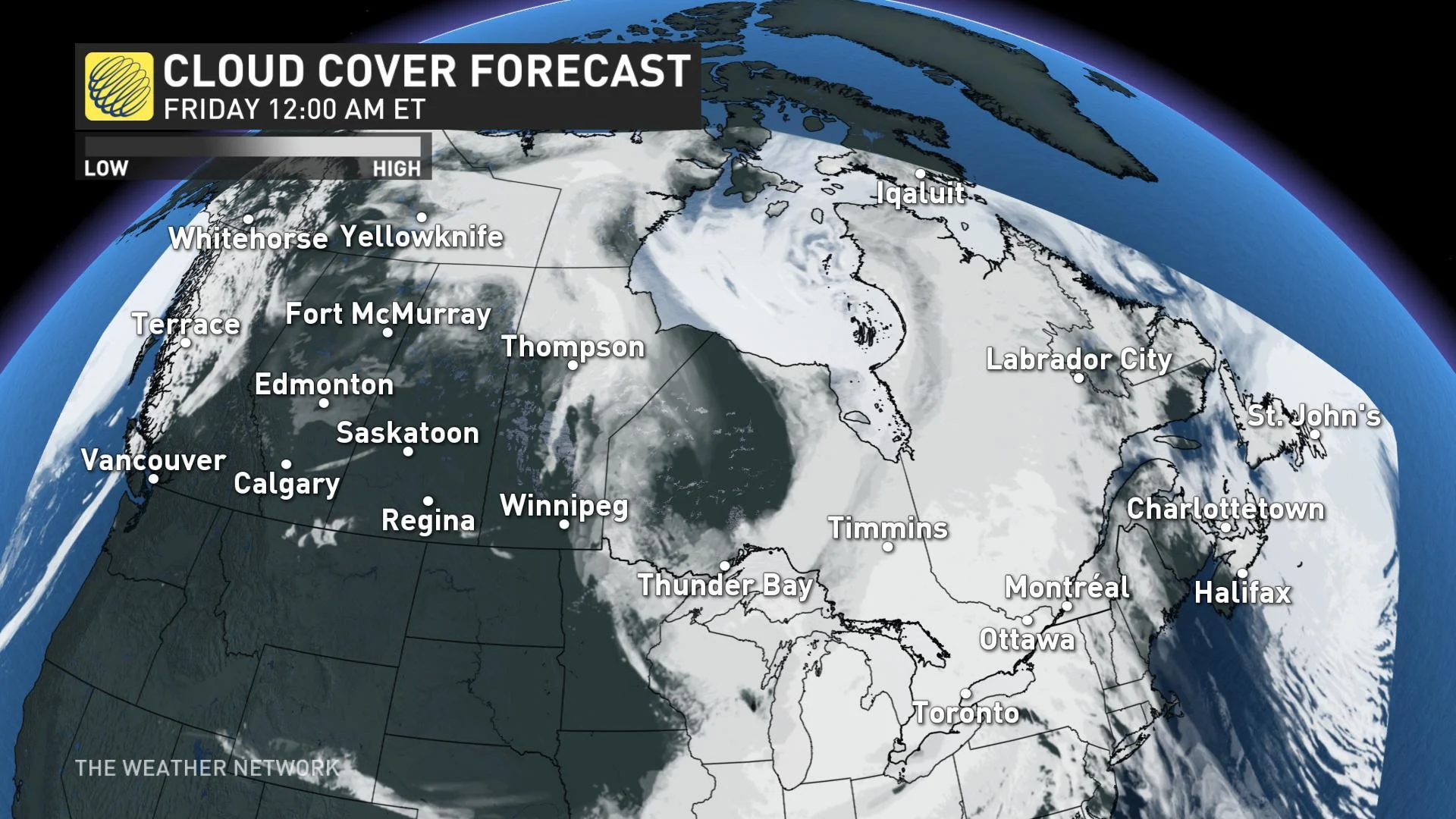
While the southern Prairies are expected to have clear skies, it is the eastern half of Canada that is favoured for actually seeing this potential meteor outburst.

This map shows that the farther east you are in Canada and the United States, the better your chances to view this potential meteor storm. Credit: Bill Cooke/NASA
Bill Cooke, of NASA's Meteoroid Environment Office produced the above map to show what regions of the continent would have the best chances of seeing the event, based on how high above the horizon the meteor shower radiant will be at the time of the expected outburst.
The only areas that really overlap between the cloud map and the meteor visibility map are southern Nova Scotia, southern New Brunswick, southwestern Manitoba, and eastern Saskatchewan.
WATCH ONLINE
If you are clouded out, as many of us will be, there are still some ways to watch this event, from wherever you may be at the time.
The Virtual Telescope Project is hosting a livestream event, with the hopes that they will spot something.
There is also Meteor Radar, which records meteors hitting the top of the atmosphere.
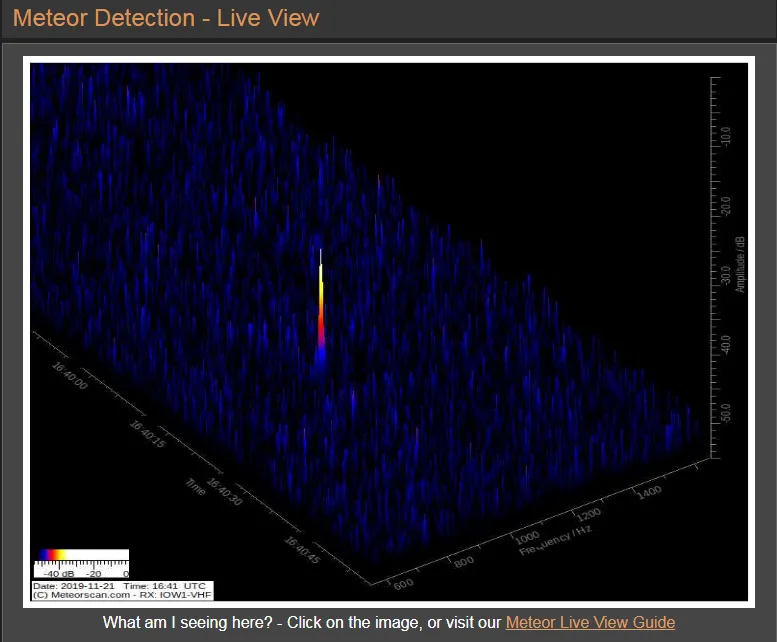
This image shows the Meteor Radar view, with a brief sharp detection at 16:41:30 UTC on November 21, 2019. Credit: MeteorScan.com
The detection observed above could belong to one of five meteor showers, however. The Leonids, the Northern Taurids, the November Orionids, the Andromedids and the alpha Monocerotids are all active at this time of year.
However, if the view shows a sudden uptick in activity between 11:30-12:10 EST tonight, that will be the sign that the meteor storm is actually happening!
DON'T BE LATE!
If the alpha Monocerotid outburst actually occurs, is will be a tricky event to watch!
Normally, when a specific time of night is recommended for best viewing of a meteor shower, viewers can simply follow that recommendation based on their own local time zone.
That is not the case for this predicted meteor storm!
The meteoroid cluster that is expected to cause this alpha Monocerotids outburst is so narrow that Earth will pass straight through it and be out the other side in roughly 40 minutes!
As Lyytinen writes: "Anyone who is going to try to observe should not be late at all. The strongest maximum would fit in about 15 minutes, or maybe a little bit less. It will be almost completely over in about 40 minutes. I recommend starting the observations at the latest at 04h30m and if you don’t want to miss any meteor, then start no later than at 4h15m."
Note: the times Lyytinen lists are in Universal Coordinated Time (UTC), which is 5 hours ahead of Eastern Standard Time.
So, in order to see this event, at the very minimum, viewers should be set up and ready to watch at the following times on the night of November 21-22:
NST: 1 a.m. to 1:40 a.m.
AST: 12:30 a.m. to 1:10 a.m.
EST: 11:30 p.m. to 12:10 a.m.
CST: 10:30 p.m. to 11:10 p.m.
MST: 9:30 p.m. to 10:10 p.m.
PST: 8:30 p.m. to 9:10 p.m.
As you can see, the farther west you go, the earlier the viewing window is. That will put the shower's radiant closer to the horizon, which typically means fewer meteors visible. It should still be worth checking out, though, if you have clear skies.
Read on for valuable tips on watching the event!
THIS HAS HAPPENED BEFORE
So, how did Jenniskens and Lyytinen make this prediction?
This outburst has been recorded four other times, so far - in 1925, 1935, 1985 and 1995.
In 1925 and 1935, the alpha Monocerotid outbursts produced over 1,000 meteors per hour - the equivalent of a meteor storm! In 1985 and 1995, hourly rates of 700 and 400 were detected, respectively. The exact rate is determined by exactly what part of the meteoroid cluster Earth flies through.
It should be noted that Bill Cooke, of NASA, is less than optimistic about this event actually occurring.
"Being a meteor shower forecaster, I am all too aware of the fact that such predictions (including mine), while pretty accurate on the timing, often estimate a shower intensity higher (factors of a few) than what actually takes place," Cooke wrote in his blog. "So I decided to take a more detailed look, starting with some dumpster diving for old papers about this shower and making a few calculations of my own. That's when the skepticism kicked in - I now think there is a pretty good chance there may be no outburst at all. And even if there is, it won't be as impressive as many think."
HOW TO WATCH A METEOR SHOWER
First, some honest truth: Many people who want to watch a meteor shower end up missing out on the experience, unnecessarily, simply because they did not know how to properly prepare for it.
So, to help avoid this here is a basic guide on how to get the most out of this meteor shower.
First, check the weather.
Having clear skies is very important for meteor-spotting. In this case, it is critical, because even half an hour of cloudy skies will ruin this show. So, be sure to check The Weather Network on TV, on our website, or from our app, just to be sure that you have the most up-to-date sky forecast.
Also, mind the temperatures. We're experiencing some chilly nights, so bundle up!
Next, get away from city light pollution.
If you look up into the sky, are the only bright lights you see street lights or signs, the Moon, maybe a planet or two, and passing airliners? If so, your sky is just not dark enough for you to see any meteors. You might catch a bright fireball, but there's no guarantee you'll see anything else. So, get out of the city, and the farther away you can get, the better!
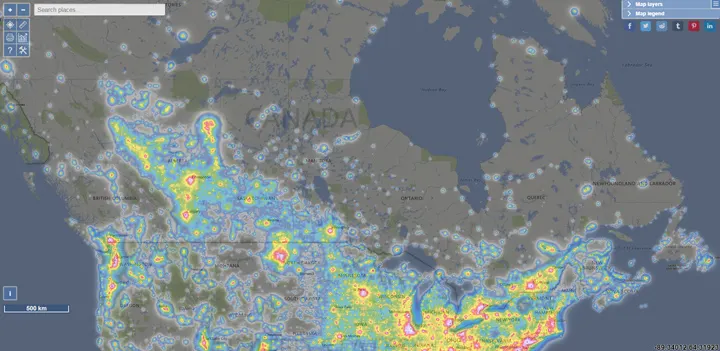
Map of light pollution across Canada. See lightpollutionmap.info and zoom in on your location to find the best spot to view from.
Try one of the many dark sky preserves across the country. If you're under the heavily light-polluted skies in the Windsor to Quebec City corridor, your best bet is to drive north until you can see a good number of stars in the sky. Check out the various Ontario provincial parks or Quebec provincial parks for a place to park. Even if you're confined to the parking lot, after hours, these are usually excellent locations from which to watch (and you don't run the risk of trespassing on someone's property).
Finally, arrive early and have patience.
For best viewing, your eyes need somewhere between 30-45 minutes to adapt to the dark. So, arrive at your viewing spot about half an hour before it is going to start (for example, 11 p.m. EST).
During this adjustment time, avoid all bright sources of light - overhead lights, car headlights, interior lights, cellphones, tablets and computer screens. Any exposure to bright light during this period will cancel out some or all the progress you've made, forcing you to start over.
Tips: Simply shield your eyes from headlights and street lights, and avoid looking at your cellphone. Putting your phone into 'night mode' and reducing the brightness of the screen will help, or there are specific apps that shift the screen's light into the red.
Once you're set up, just sit back in your chair or lean back against your car, and look straight up. The graphic above presents the meteor shower's 'radiant' point on the field of stars, showing where the meteors appear to originate from, but meteors can flash through the sky anywhere above your head. Also, remember that meteors show up at random times, as well. Dozens could streak overhead one minute and then there's nothing for a few minutes after.
Good viewing!
Source: MeteorNews | NASA Blogs
Teaser image courtesy: NASA











